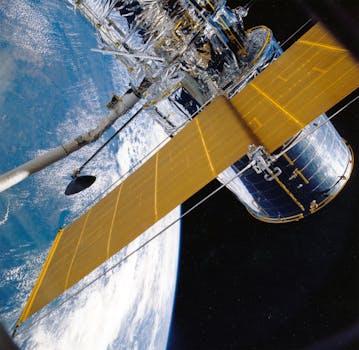
GEO Satellites: The Power of Geostationary Orbit
GEO satellites, or Geostationary satellites, are a type of satellite that orbits the Earth at an altitude of approximately 36,000 kilometers, which is about 1/6 of the way to the Moon. At this altitude, the satellite’s orbital period matches the Earth’s rotational period, allowing it to remain stationary in the sky relative to a fixed point on the Earth’s surface. This unique characteristic makes GEO satellites ideal for a wide range of applications, including telecommunications, weather forecasting, and navigation.
History of GEO Satellites
The concept of GEO satellites was first proposed by science fiction writer Arthur C. Clarke in 1945. However, it wasn’t until the launch of the first GEO satellite, Syncom 2, in 1963 that the technology became a reality. Since then, hundreds of GEO satellites have been launched, providing a wide range of services and applications. Today, GEO satellites play a critical role in modern satellite technology, with many countries and organizations relying on them for communication, navigation, and weather forecasting.
Applications of GEO Satellites
GEO satellites have a wide range of applications, including telecommunications, weather forecasting, navigation, and Earth observation. In the field of telecommunications, GEO satellites are used to provide television broadcasting, internet connectivity, and mobile phone services. They are also used for weather forecasting, providing images of cloud patterns, storm systems, and other weather phenomena. In addition, GEO satellites are used for navigation, providing location information and timing signals for GPS and other navigation systems.
Benefits of GEO Satellites
GEO satellites offer a number of benefits, including global coverage, high bandwidth, and reliability. Because they are stationed in a fixed position relative to the Earth’s surface, GEO satellites can provide continuous coverage of a specific region, making them ideal for applications such as telecommunications and weather forecasting. They also offer high bandwidth, allowing for the transmission of large amounts of data, and are highly reliable, with many satellites operating for 15 years or more.
Challenges and Limitations of GEO Satellites
Despite the many benefits of GEO satellites, there are also some challenges and limitations to their use. One of the main challenges is the high cost of launching and operating a GEO satellite, which can be expensive and require significant resources. Additionally, GEO satellites are susceptible to interference from other satellites and terrestrial systems, which can impact their performance and reliability. Furthermore, the geostationary orbit is becoming increasingly congested, which can make it difficult to find available slots for new satellites.

